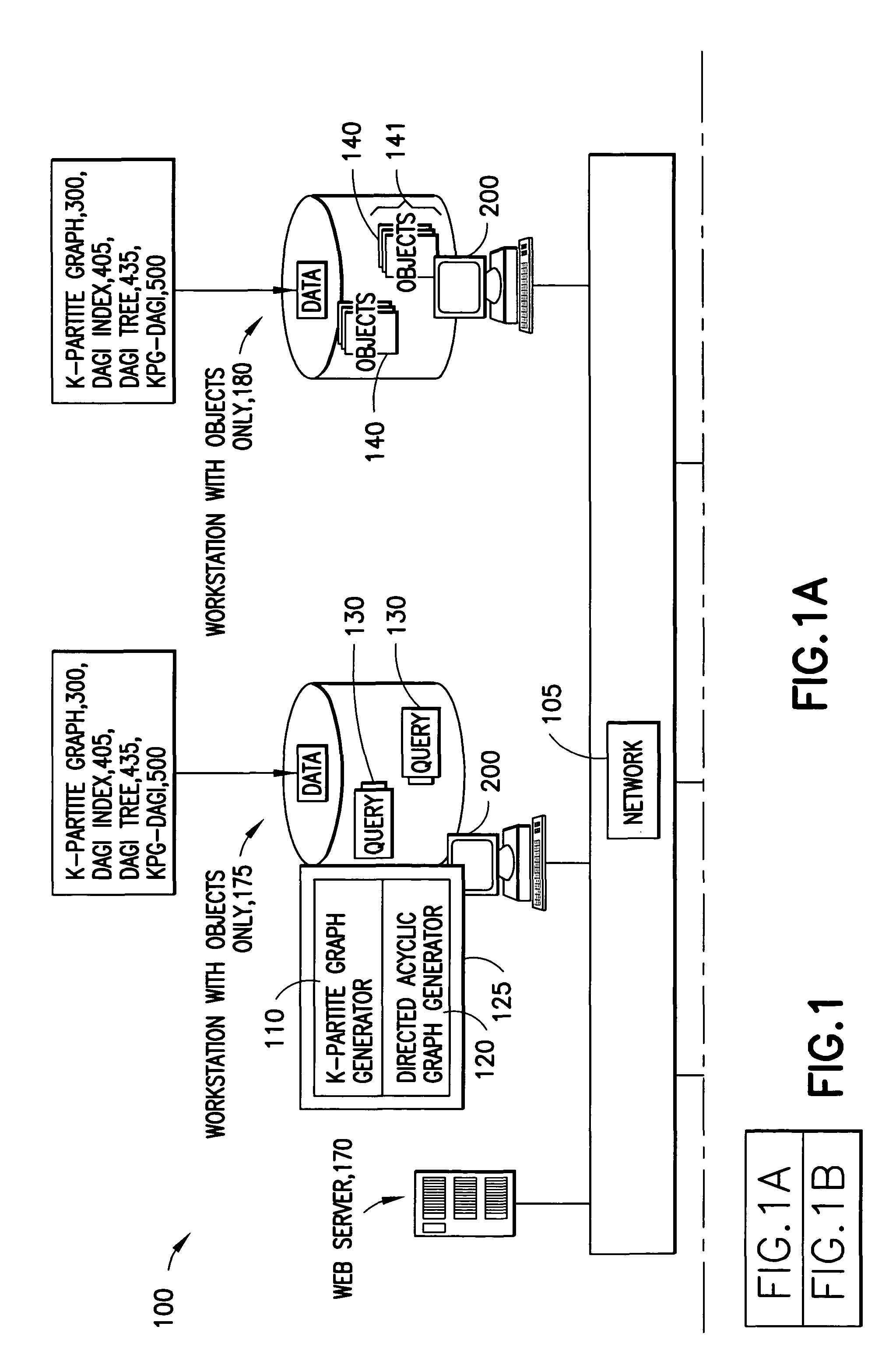System and method for simplifying and manipulating k-partite graphs
a graph and partite technology, applied in the field of information retrieval and analysis, can solve the problems of difficult updating, time-consuming and prone to errors, and inability to automate the creation of k-partite graphs that describe the relationship between objects, such as digital documents and peopl
- Summary
- Abstract
- Description
- Claims
- Application Information
AI Technical Summary
Benefits of technology
Problems solved by technology
Method used
Image
Examples
Embodiment Construction
[0037]FIG. 1 is a block diagram of the computing environment in which the present invention is used in a non limiting preferred embodiment. The figure shows some of the possible hardware, software, and networking configurations that make up the computing environment. The computing environment or system 100 comprises one or more general purpose computers 170, 175, 180, 185, 190, and 195 interconnected by a network 105. Examples of general purpose computers include the IBM Aptiva personal computer, the IBM RISC System / 6000 workstation, and the IBM parallel SP2. (These are Trademarks of the IBM Corporation.) The network 105 may be a local area network (LAN), a wide area network (WAN), or the Internet. Moreover, the computers in this environment may support the Web information exchange protocol (HTTP) and be part of a local Web or the World Wide Web (WWW. Some computers (e.g., 195) may occasionally or always be disconnected 196 from the network and operate as stand-alone computers.
[0038...
PUM
 Login to View More
Login to View More Abstract
Description
Claims
Application Information
 Login to View More
Login to View More - R&D
- Intellectual Property
- Life Sciences
- Materials
- Tech Scout
- Unparalleled Data Quality
- Higher Quality Content
- 60% Fewer Hallucinations
Browse by: Latest US Patents, China's latest patents, Technical Efficacy Thesaurus, Application Domain, Technology Topic, Popular Technical Reports.
© 2025 PatSnap. All rights reserved.Legal|Privacy policy|Modern Slavery Act Transparency Statement|Sitemap|About US| Contact US: help@patsnap.com



